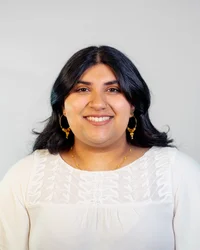
Ever asked Iman (hey, that’s me!) a question that was short, sweet and maybe not actually something anyone can actually give you advice on?
Well, this is for you! You asked. I answered. Below is a bunch of questions — some silly, some serious — that you’ve sent in.
Should I put milk after cereal just to be more socially acceptable?
Yes. You must stop your ways. What if you put in too much milk? Then what, more cereal? But then what if it’s too much? Do you save it? Throw it away? The logistics are making my head hurt.
I do a lot of writing for work and school but my TAs and coworkers always get annoyed when I use commas wrong. As an English major, can you teach me?
If there’s one thing I’m good for, it’s yelling at people (in a kind and loving manner) when commas are used incorrectly.
The main types of commas are listing commas, joining commas and bracketing commas. Listing commas are used in lists (obviously) and can replace the word “and” or “or.” For example, in the sentence “Iman is very funny and humble and kind,” the first “and” can be replaced with a comma and the second ‘and’ can have a comma before it (unless you don’t use the Oxford comma but that’s a whole ‘nother can of worms).
Joining commas join independent clauses by marking their separation. These clauses become one when joined by conjunctions. For example, the comma here is a joining comma — “The Ubyssey is UBC’s student paper, but CiTR is the radio station.”
Bracketing commas serve as quasi-em dashes. They set aside clauses, phrases or words that are added to a sentence, but not essential to its meaning. For example, the sentence “Spencer, The Ubyssey’s opinion editor, is from Vancouver,” has bracketing commas.
There are a bunch more rules — like using commas after introductory clauses that come before a sentence’s main clause and using commas to shift between a sentence’s main idea and a quotation — but that’s the gist. And if I messed up any commas here, please don’t tell me.
I have a hard time saying no to social outings. How can I get better at this?
The answer comes down to understanding that you need to take care of yourself before you do anything else. Taking care of yourself and doing things like doing your laundry, cleaning your countertops, taking showers, charging your phone, etc. are all things that you need to do for you.
Becoming better at saying no comes from one thing — establishing that you come first. I know. It’s cliche, but true. You need to do those self-maintaining activities and keep working toward that degree. You shouldn’t feel like you have to blow off finishing your homework to hang out with your friends when you don’t want to.
Having to feel like that eliminates the point of saying yes, which is to go have fun and relax. Saying no might make you feel like you’re letting down your friends, but taking care of yourself isn’t something to be ashamed of.
The fear of missing out is real, and damn, I feel it a lot. But, you do not have to feel like you have to say yes to plans every single time when you just don’t have the capacity for it. That’s valid. And in the end, you’ll likely find the times you do say yes, with the capacity and time for it, more worthwhile.
Want to be told what to do by someone who was reminiscing about their Model UN days mere hours ago? You got it! Send your questions to Iman at advice@ubyssey.ca, or submit anonymously at ubyssey.ca/pages/advice!


